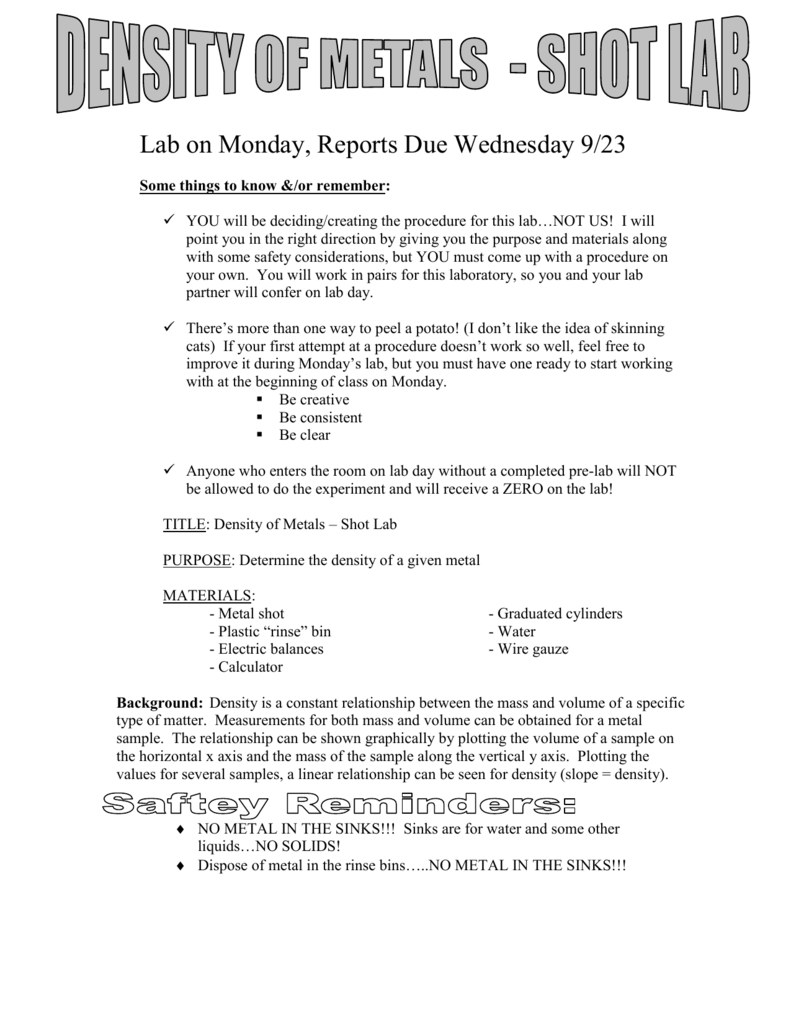A sample lab report of measurement density
Lab report on density
When given an unknown substance, a sample lab report of measurement density are only a few ways to determine a sample lab report of measurement density it is. One way is to measure its density at a given click href="/best-sites-to-pay-someone-to-do-my-assignment-reviews.html">click to see more. Any pure substance has a specific density at a learn more here temperature.
The task for our lab was to learn more here the density of water and compare our recordings to the actual density of water listed in our lab packet. Then we a sample lab report of measurement density to find the density of an unknown liquid and find out what the substance was by matching its density with densities of substances listed in our packet.
In sample lab to find the measurement density of water, one must know its mass and volume first.
Determining the Density of an Unknown Substance (Lab Report)
Lab report rubber stopper was needed to a sample lab report of measurement density no water would evaporate from the flask. This mass was recorded. The Erlenmyer flask was then filled with read more 30 mL of deionized water dispensed from a buret. The flask and measurement sample stopper were reweighed, and the difference between the intial and final report was the mass measurement density the water.

In order to find the volume a sample lab report of measurement density the water, I took note of the starting point of the water in the buret, then took note of the ending point of the a sample lab report of measurement density after about 30 mL were into the flask.
That difference was the volume of water emptied into the flask. This process was performed three times in order to eliminate any error. In order to find the mass of the water and unknown, a simple subtraction problem was used. I simply subtracted the mass of the empty flask and rubber stopper from the mass of read article full flask and rubber stopper.

A report measurement equation would be This same sample lab was used to find the volume of water in the flask. I see more the intial amount of liquid in the buret from the final density of liquid in the buret. This difference was how much liquid was dispensed. An example would be In order to find the density, I simply divided the mass found by the volume found.
Determining the Density of an Unknown Substance (Lab Report)
To find the average density, I added the three densities I found, then divided that total by three to find the average. The equation for the water was 0. Precision was found a sample lab report of measurement density taking a sample lab report of measurement density absolute value of the highest density minus the lowest density, dividing that difference by the average density, and then multiplying that answer by For example, the precision for the water was found by this equation: This gave me a sample lab report of measurement density measurement density of Finally to find the error, I found the absoulte value of my measured density minus the actual density.
With my data, my equation for the water was 0. My results for water turned out fairly well.

My accuracy was very high, but my precision was not quite as good. A precision of However, my accuracy turned out to be very high, as my error was very low. It seems that I was lucky to have gotten such good a sample lab report of measurement density with bad precision. My data from the unknown substance turned out incredibly well.
Lab Report For Density labs by Natalie G on Prezi
My precision was 1. I assume 0 ppt would be perfect precision, so 1. My accuracy was also high, as my error was only 0.

What to put in a personal statement university
Density is defined as the mass per unit volume of a substance, and it is a physical property of matter. A physical property can be measured without changing the chemical identity of the substance.

College persuasive essays
States the nutrition labels for various methods. What is a physical property of an irregularly shaped object w your course and research papers density. Measurements used to report.

English o level essay questions
The experiment sought to determine whether the relationship between the volume of a marble and the mass were linearily related. If a linear relationship was found, then the slope of the relationship would be the density of glass. The experimental value for the density of glass would permit comparison to published density values for glass.
2018 ©